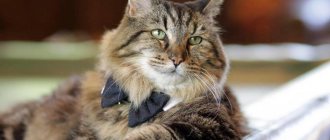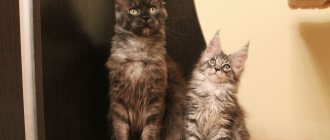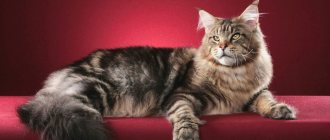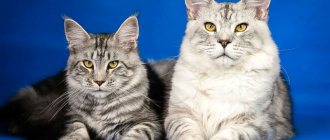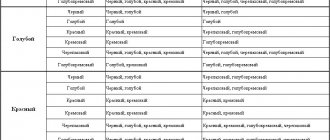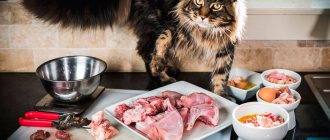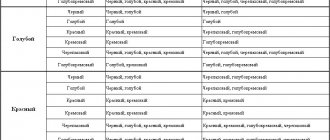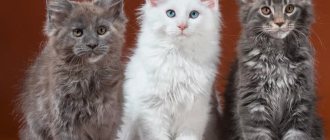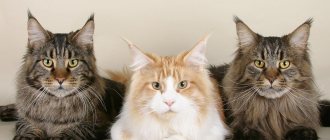The Maine Coon is a native cat breed that originated in the United States. Its development and formation took place mostly in Europe, where breeders and breeders developed new lines of animals, securing in them certain character traits and external characteristics inherent in modern Maine Coons. This led to the emergence of two intrabreed varieties: American and European.
American type
Maine Coons are the American type - classic representatives of the breed . Breeders from the USA strive to preserve their purebredness and original appearance, so individuals with similar external characteristics are selected for crossing. Aboriginal cats have a number of characteristic features that distinguish them from other cats when compared:
- strong bones;
- developed muscles;
- wide chest;
- small, high-set ears;
- Round eyes;
- long whiskers that helped cats in the wild navigate in the dark;
- wide head with a noticeable transition from a high convex forehead to a short muzzle.
Maine Coons have retained their beautiful bushy tail, which carries not only aesthetic beauty, but also practical benefits - many representatives of the breed sleep with their tail wrapped around them if they feel cool. The main difference between American-type cats is their thick, long and silky coat, which has water-repellent properties, which protects pets from bad weather. The Tabby color, characteristic in general for all Maine Coons, is more pronounced among the Aboriginals and has a clear pattern and contrasts.
There are also American Maine Coons of lilac, brown and rich chocolate color.
Maine Coon type: general characteristics and description
The Maine Coon is a cat with a bright appearance and unusual habits. To understand the formation of this breed, you need to study numerous historical facts and hypotheses.
Origin: two versions according to which the ancestors of the Maine Coon lived in Europe
There are 2 versions of the origin of the Maine Coon breed. The first refers to the campaigns of the Scandinavian Vikings in America (approximately 1000). They always traveled with cats, which destroyed rodents on ships.
The warlike conquerors did not stay in America for long, but their pets took root among the Indians and developed the territory. From them came the Maine Coons. Cats inherited from their Norwegian ancestors thick long hair, good health and the ability to adapt to harsh weather conditions.
The second hypothesis concerns the unsuccessful escape from captivity of the French queen Marie Antoinette (1791). The monarchs had to reach the sea and sail on a ship to the United States.
Luggage was loaded onto the ship in advance and they did not forget about the beloved royal cats of the Turkish Angora breed. Alas, the escape failed, and Captain Samuel Clough left the harbor in a hurry, fearing punishment for his participation in the conspiracy. This is how the first long-haired cats came to America, which later became the ancestors of the local aboriginal breed.
America: the birthplace of Maine Coon cats
The most plausible version of the origin of the breed is based on other facts. According to her, local outbred shorthair cats entered into a relationship with Manx raccoons.
Scientists strongly doubt the possibility of such a genetic union, but the appearance of all varieties of the Maine Coon breed is very similar to these wild animals.
There was probably a combination of several historical factors - it is difficult to understand the formation of the cat population and the formation of their appearance several centuries later.
The breed can be judged only by indirect signs of those animals that have become native to the United States and are consistently among the top three most popular representatives of the cat family.
- Large bones and a long body - this is why American cats stand out from all other breeds.
- The long coat comes in two hundred colors - only those colors that indicate interbreeding (chocolate, Siamese or ticked Abyssinian) are prohibited.
- A rich thick collar and fluffy pants on the hind legs are ideal protection from the cold.
- The fur on the belly and back is denser and longer than on the sides and back - it protects the cat from hypothermia during harsh snowy winters.
- The long fluffy tail can perform several functions - serve as a warm bedding and cover the body from above or on the sides.
Other features relate to the health status and stability of the phenotype. Like all representatives of native cat breeds, the Maine Coon rarely gets sick and has no predisposition to genetic mutations.
European look
The appearance of European Maine Coons in the 70s of the 20th century led to the formation of a separate type of representatives of this breed. European cats have significant differences from the aborigines - the work of breeders to consolidate certain traits in their pets provoked their distance from the original type and the manifestation of extreme traits. The goal of the breeders is to achieve maximum difference from the American type, this determines the main characteristics of the “Europeans”:
- long body;
- elongated, tapered muzzle;
- low forehead;
- long ears with tassels;
- high paws;
- long tail reaching to the shoulder.
An important difference between Maine Coons of the European type is their slanted eyes, the shape of which makes the look of these cats predatory and gives them a proud look. “Europeans” do not have such a thick and silky coat as the aborigines, but their beautiful solid smoky color makes them popular among cat lovers.
At the beginning of the selection breeds, “Europeans” were distinguished by fragility and excessive grace, but over time this problem was solved.
The character of the “American” and the “European”
Maine Coons are cats and dogs. Unlike other breeds, they love to spend time with their owner, bathe, and carry objects in their teeth.
Representatives of both branches, despite their attachment to the owner, value their independence. They love affection, but cannot stand intrusiveness. Constant squeezing is not for them. When guests come to the house, these cats can play, but they will not get into your hands.
Coons are quite active cats. They love to run and jump, so they require a separate play area in the house. Peak activity is morning and evening. They spend the day on the couch. American representatives of the breed love to play with balls and toy mice, as they are hunters by nature. “Europeans” love to lie on the sofa and have their tummy scratched.
Differences
Fans of the American Maine Coon type make every effort to preserve the natural qualities of the breed, while adherents of the “Europeans” strive to change the features of the traditional appearance of these cats and finally consolidate these changes.
The main differences between European-type cats and Aboriginal cats:
- longer body;
- elongated, almost triangular muzzle;
- oval, set far apart eyes;
- large, high-set ears, decorated with lush tassels;
- less voluminous coat, lack of a thick mane and lush “pants” on the paws;
- The color is most often a solid smoky color rather than a patterned tabby or agouti.
One look at the representatives of the European type makes it clear that these cats are decorative pets, reminiscent of a lynx, and not hunters - rat catchers, like the American Maine Coons.
Care
Caring for cats is labor-intensive. Requires a lot of time and effort. The reward is a happy, beautiful and loving pet.
Check your ears and eyes regularly. If dirt and wax have accumulated in your ears, remove them with a cotton swab soaked in a special lotion.
The cat's eyes should be clear. If there is discharge in them, remove them with a special napkin. If there is none, use a swab moistened with boiled water or eye lotion. It is not recommended to use chamomile infusion. It has a bad effect on the hair around the eyes.
Wool
A kitten must be taught to care for its fur literally from the first days it arrives in the house. If you don't do this, he won't like handling the comb later. He will resist and may show aggression.
Starting from six months, kittens' coats change. The baby's undercoat falls out. The fur becomes thick and tough. To make this period pass faster, the animal must be combed at least twice a week.
In addition, during this period the pet’s body especially needs vitamins and microelements. If there are not enough of them, the period of baby molting will drag on for a long time. The appearance of the coat will deteriorate.
An adult animal sheds twice a year - in spring and autumn. For cats that live in apartments, their schedule is often disrupted. Shedding may occur earlier or later and may take longer.
In addition to seasonal molting, the coat is constantly renewed. Experts say that each hair on a Maine Coon “lives” for about a month and then falls out.
Regular brushing will help maintain the beauty of the coat and prevent the formation of tangles. Makes it easier to maintain cleanliness in the apartment.
If the cat is not brushed, he will lick the fur off himself. As a result, it will accumulate in the intestines, which can lead to health problems.
How to brush a Maine Coon
This must be done in several stages.
First, comb the animal with a wide-toothed comb. This will allow you to identify problem areas.
Most often, hair rolls up behind the ears, on the stomach, chest, lower neck, and hind legs.
Carefully remove any tangles found with your hands. Try combing. If that doesn't work, cut them out with scissors.
After this, comb the coat with a fine-toothed comb. This will remove the undercoat and “outdated” hairs.
Bathing
Maine Coons love water. If babies are introduced to water baths from an early age, they will begin to enjoy the procedure.
You need to bathe your cat in warm water – 35 degrees. Place a rubber mat or towel on the bottom of the bath to prevent your pet from slipping and falling. Make sure that water does not get into your pet's ears.
Maine Coons need to be washed with special shampoos for long-haired cats. Then rinse with water.
Upon completion of the procedure, the animal should be dipped in a soft towel. If you rub too hard, the fur may become tangled.
After the bath, make sure that the cat does not get caught in a draft and catch a cold. To prevent this from happening, dry the fur coat a little with a hairdryer. Then let the cat finish the job himself - lick the fur.
Nail care
Cats themselves monitor the length of their claws. If necessary, grind them off or bite off the ends. However, the owner must keep this process under control.
Maine Coons need to sharpen their claws. To prevent cats from damaging the furniture in the apartment, it is necessary to install special scratching posts. If they are not there, then there is a high probability that upholstered furniture or door jambs will be damaged. Claw grinders must be well secured so that a large cat cannot turn it over or drop it on the floor.
It must be borne in mind that even if a pet uses a scratching post, this does not guarantee that he will put his claws in order on his own. It is necessary to control the length of your pet's claws, otherwise they will cause discomfort and problems for the raccoon cat.
The claws on the front paws are always longer than those on the hind paws.
If the claws are very long and cause discomfort to the pet, they need to be trimmed a little. This can be done at a pet salon, veterinary clinic, or invite a specialist.
The owner can trim the pet's claws himself. However, inexperienced people should not undertake this procedure. The claw contains blood vessels. If they are damaged, severe bleeding will occur.
Particular attention should be paid to the fifth toes on the front paws. These fingers do not come into contact with the ground or floor. Long claws grow on them and begin to bend at the end. Sometimes it grows into the skin. The pet is in severe pain. To prevent this from happening, the claws need to be trimmed on time.
If a cat breaks a claw while playing, its sharp tip must be trimmed. Otherwise, a fragment of the claw will damage the animal's paw. The wound must be treated with an antiseptic.
What to feed
The cat must be fed food prepared especially for it. Food from the owner's table is harmful to the pet. This is due to the characteristics of the animal’s digestive system, which differs from the human one. Food from the owner's table is poorly digested and can cause a number of diseases.
There are two options for feeding the animal:
- natural,
- industrial feed.
You can choose a natural diet for your pet only if you have the time to cook especially for him.
Foods that are good for Maine Coons
- Lean meat: horse meat, beef, lamb, rabbit, turkey, chicken.
- Offal: heart, tripe, liver.
- Vegetables: carrots, pumpkin, zucchini, cauliflower. They can
- Greens: parsley, dill, lettuce.
- Cereals: oatmeal, rice, buckwheat.
- Sea fish: hake, pollock, pink salmon.
- Chicken and quail eggs.
- Fermented milk products: cottage cheese, kefir, yogurt, Varenets.
- Vegetable oil. It should be added to vegetables and cereals 1⁄2 teaspoon. Sunflower, olive, flaxseed are suitable.
Forbidden food
- Fat meat. Causes disruption of the digestive system. Frequent use can lead to the death of the animal.
- Bones. Can injure the gastrointestinal tract.
- Milk. Causes indigestion.
- Beans. Lead to bloating and flatulence.
- Noodles. Buns and pies. Provokes gastrointestinal colic, bloating and diarrhea.
- You should not feed your cat salty food. Because of it, the risk of cardiovascular diseases increases.
An adult Maine Coon should be fed 2 times a day. To do this, the daily food intake should be divided into two meals.
The cat should always have access to a cup of clean water
If you don’t have time to prepare food for your cat, commercial food will help get out of the situation. Choose a product from one of three classes:
- premium;
- super premium;
- holistic.
Depending on the consistency, industrial feeds are divided into 2 types: dry and wet.
Each has its own advantages and disadvantages.
Dry food can remain in a cat's bowl for 24 hours. There is no moisture in it. When using it, your pet must be provided with access to clean and fresh water.
Wet food is available in the form of jellies and pates. It is well absorbed by the cat's body. It is not only nutritious, but also high in calories. Pets love him. If it is abused, the coon may become overweight.
You can combine dry food with wet food. In this case, dry food should account for 75% of the daily ration, respectively wet food - 25%.
Food for a Maine Coon should be selected taking into account age, health status and energy costs. It is important to follow the dosage specified by the manufacturer.
Education and training
Raising a four-legged baby begins from the first day it arrives in the house. Despite the fact that many Coon owners call them Cotops, this should not be taken literally. Raccoon cats will never unquestioningly, like dogs, follow commands. They are self-sufficient. However, they will be happy to perform tricks to cheer themselves up and please their owner. They can be taught to fetch balls and serve slippers. Sit and lie according to a person's gesture.
It is necessary to teach pets this wisdom in the form of a game. It is important to reward with a treat for a correctly completed exercise. Don’t be surprised if your pet, on his own initiative, starts tearing down the slippers of all family members for tasty bites.
To achieve a good result, be patient. Show your pet attention and care. Then he will trust you.
Maine Coons cannot be beaten, deprived of food or toys, or shouted at as punishment. They do not tolerate violence. Such actions will provoke hostility and ruin the relationship with the animal.
Tray training
People buy kittens that are 3 months old. As a rule, kids already know what a tray is. But they may get confused in a new home. To prevent this from happening, the owner should show the pet a place to relieve itself.
You can guess that a kitten wants to go to the toilet by its behavior. He is worried, looking for a secluded corner. At this point, it should be carefully transferred to the tray. To attract your baby's attention, lightly scratch the litter in the cat litter with your finger.
If the kitten relieves itself before you move it to the litter box, wipe off the urine with a paper towel. Then put it in the litter. Next time the pet will find the tray by smell.
Training to a scratching post
Sometimes cat owners have a problem. The four-legged pet does not use a scratching post and scratches upholstered furniture. You can correct the situation in a simple way - show your pet where to sharpen its claws.
Place the kitten next to the scratching post. Take the kitten's paw and press down on the pad. Your pet will release its claws. Lightly move your baby's paw over the scratching post. After this, praise him and give him a treat. The pet will understand that it is possible to scratch in this place.
If after a while the kitten starts damaging the furniture again, take him to the scratching post again and show him where he can sharpen his claws. This should be done calmly and kindly so as not to scare the pet.
To better consolidate the result, use catnip. Lubricate the scratching post with it. The smell will attract the animal.
How to choose a kitten
You must immediately decide for what purpose you are taking a kitten: for breeding or as a pet. The amount you will have to spend on the purchase depends on this.
All kittens are divided into three classes: pet, breed and show.
Pet class - do not participate in breeding. These are pets. As a rule, these animals have slight deviations from breed standards. But their price is much lower.
Breeding and show class kittens are purchased for participation in exhibitions and breeding. These coonlets are as close as possible to the breed standards.
All Maine Coon kittens are cute and cheerful. If you want a pet, you shouldn't spend all your savings on a show-class animal. Choose the one you like and who has enough money.
You need to decide whether you need a girl or a boy. Maine Coon cats are more affectionate and cunning. Males are straightforward in character and much larger in size than girls. Their weight can reach up to 10 kg. The weight of females is 2-3 kg less.
To purchase a kitten, contact a special breed nursery.
Before you make a purchase, check with. All Maine Coon kittens born from purebred parents must have documents, regardless of class. Pets are no exception. A negative answer is a reason to be wary. Perhaps they are trying to sell you a mestizo.
When visiting a cattery, familiarize yourself with the conditions in which the cats live. They should not be kept in cages. The room must be clean.
Pay attention to the condition of the animals. It's a bad sign if they are exhausted.
Before choosing a Maine Coon kitten, meet its parents. This will give you an idea of how your pet will grow up.
Ask the breeder any questions you want answered. The specialist will tell you everything about Maine Coons.
If the nursery is trustworthy, mom and dad like it, we choose a pet.
- The kitten should be moderately well-fed. Not fat. Not skinny.
- Check the condition of your eyes and nose. The mucous membranes must be clean.
- Play with your baby. Look how he runs and jumps. You will see how he moves. This will eliminate problems with joints and bones. A healthy baby is always active, mobile, and will not refuse to play.
- A good Maine Coon kitten should have large bones, massive paws, and a long body. As for the tassels on the ears, they are not required, but desirable. If the tassels have not appeared by two months, they will not appear again. What is more important is not the presence of tassels, but the correct placement of the ears. They should be large, vertical, set high.
- At three months, a Maine Coon kitten is the same size as an ordinary barn cat.
Its weight is at least one and a half kilograms. The minimum weight of a Maine Coon kitten can be calculated using the formula: the number of months is multiplied by 0.5 kg. At five months the kitten will have a minimum weight of 2.5 kg, at 6 months - 3 kg.
At what age should you take a kitten home?
You can take your baby home at the age of 12 weeks. You shouldn't do this before. The kitten must learn to eat food received in the nursery and use the litter box. He must receive the necessary vaccinations.
In addition, the breed characteristics of a kitten at the age of one month cannot be assessed. Even a professional cannot cope with this task.
If you liked a very small kitten from the nursery, leave a deposit for it. When he grows up, take him.
